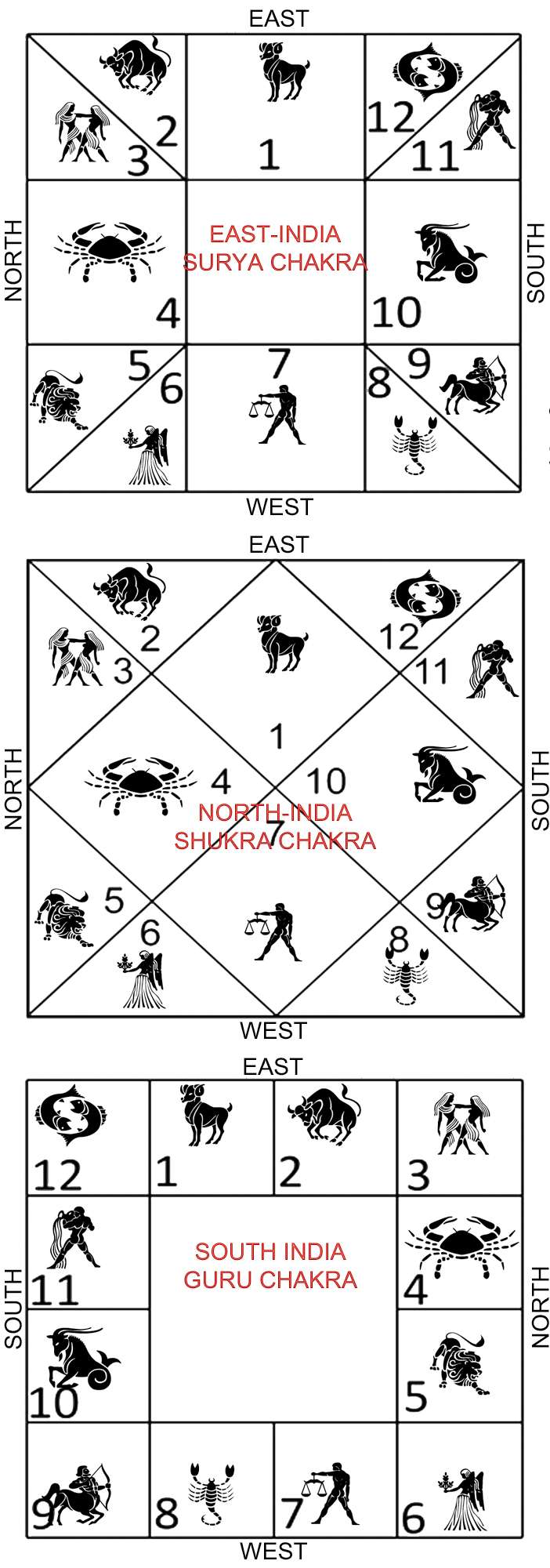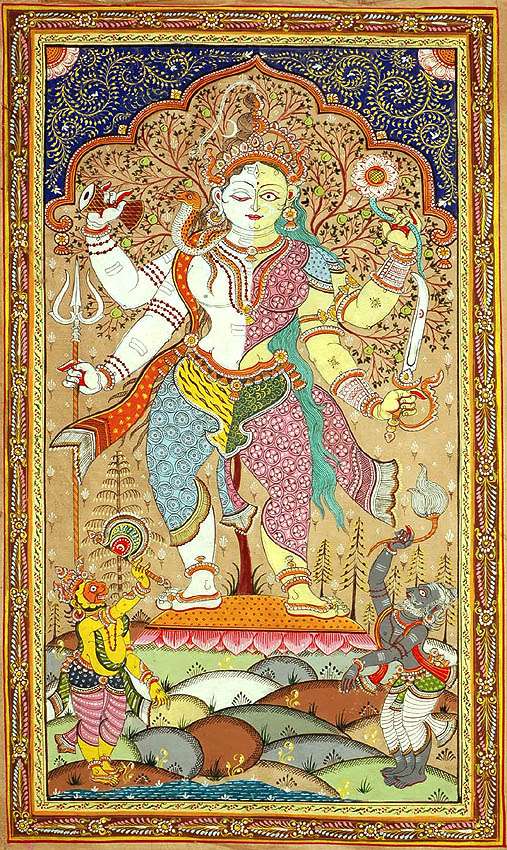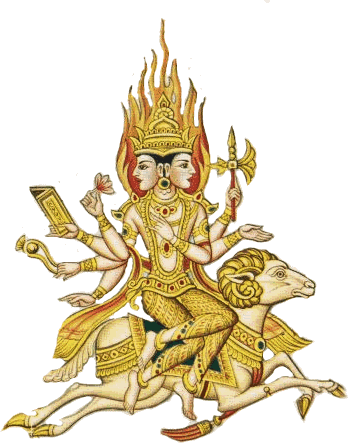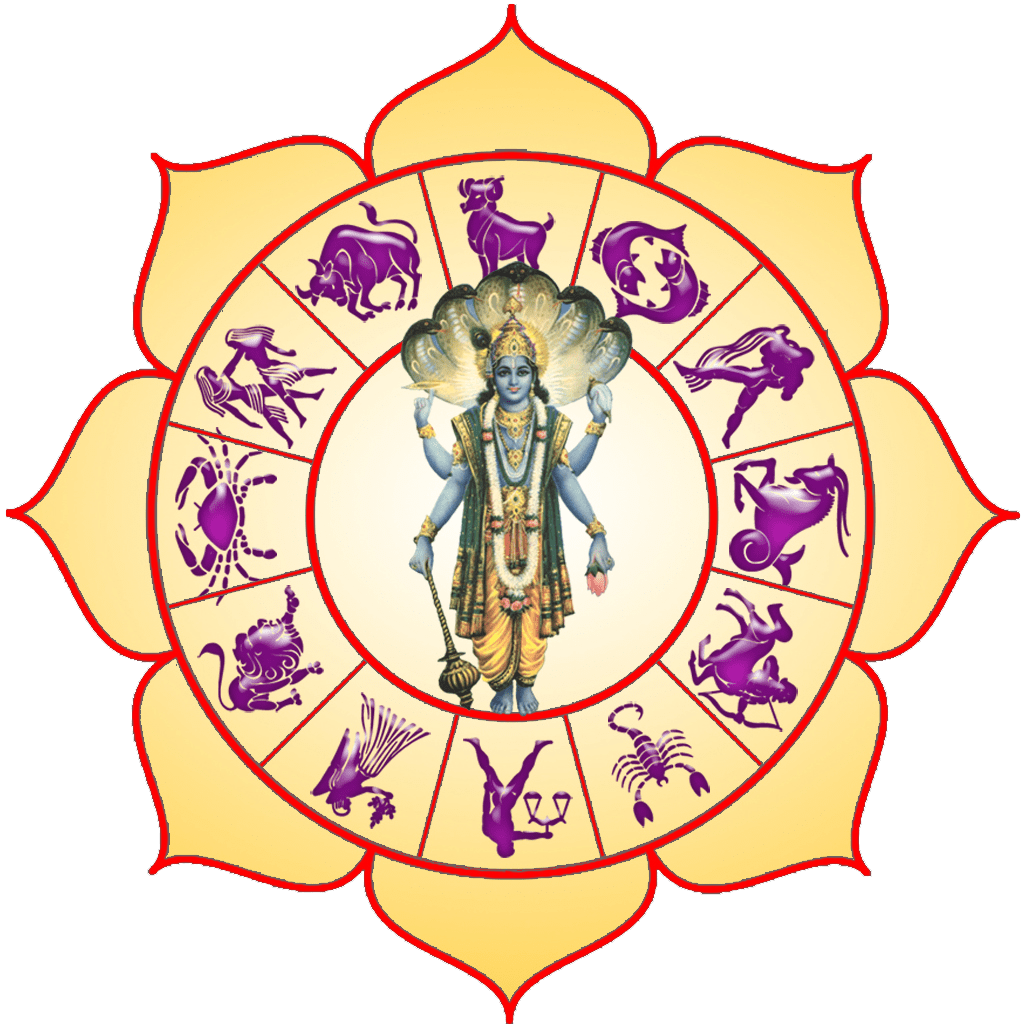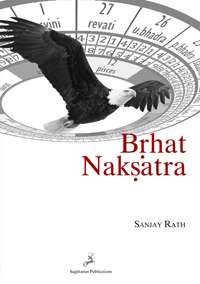
बृहत् नक्षत्र $7.53
ईश्वर ने आकाश को नक्षत्रों से ऐसे सजाया है जैसे काले घोड़ों पर मोती जड़े हों। सूर्य का प्रकाश उन्हें दिन में छिपा लेता है, और उनका सारा ज्ञान रात्रि के अंधकार में प्रकट होता है।
…महर्षि पराशर, ऋग्वेद
हालाँकि हम नक्षत्र पर कुछ बुनियादी पाठ पढ़ाएँगे, लेकिन वे इस पुस्तक में निहित ज्ञान का स्थान नहीं ले सकते। यदि आपके पास इसकी प्रति नहीं है, तो अभी प्राप्त करें। यह आपको न केवल नक्षत्र की मूल बातें समझने में मदद करेगी, बल्कि इसमें कई उन्नत अवधारणाएँ भी हैं जो इस विषय पर किसी अन्य पुस्तक में नहीं मिलेंगी। इस और अन्य पुस्तकों में संपूर्ण शिक्षण सिद्धांतों के माध्यम से सीखने की पारंपरिक शैली का अनुसरण करता है।
बृहत् नक्षत्र पुस्तक खरीदें
नक्षत्र नाम
नक्षत्र नाम याद करें
नक्षत्रनामानि। nakṣatranāmāni |
अश्विनी भरणी चैव कृत्तिका रोहिणी मृगः। आर्द्रा पुनर्वसुः पुष्प् अस्ततोऽश्लेषा मघा तथा॥
पूर्वाफाल्गुनिका तस्मादुत्तराफाल्गुनी ततः। हस्तश्चित्र तथा स्वाती विशाखा तदनन्तरम्॥
आनुराधा ततो ज्येष्ठा ततो मुलं निगद्यते। पूर्वाषाढोत्तराषाढस्त्वभिजिच्छवणस्तथा॥
धनिष्ठा शतताराख्यं पूर्वाभाद्रपदा ततः। उत्तराभाद्रपाच्चैव रेवत्येतानि भानि च॥
aśvinī bharaṇī caiva kṛttikā rohiṇī mṛgaḥ| ārdrā punarvasuḥ puṣp astato’śleṣā maghā tathā ||
pūrvāphālgunikā tasmāduttarāphālgunī tataḥ| hastaścitra tathā svātī viśākhā tadanantaram ||
ānurādhā tato jyeṣṭhā tato mulaṁ nigadyate | pūrvāṣāḍhottarāṣāḍhastvabhijicchavaṇastathā ||
dhaniṣṭhā śatatārākhyaṁ pūrvābhādrapadā tataḥ | uttarābhādrapāccaiva revatyetāni bhāni ca ||
नक्षत्र नाम:
भू लोक: अश्विनी, भरणी, कृत्तिका, रोहिणी, मृगशिरस, आर्द्रा, पुनर्वसु, पुष्य, आश्लेषा।
भुव लोक: मघा, पूर्वा फाल्गुनी, उत्तरा फाल्गुनी, हस्त, चित्रा, स्वाति, विशाखा, अनुराधा, ज्येष्ठा
स्वर्ग लोक: मूल, पूर्व आषाढ़, उत्तर आषाढ़, अभिजीत, श्रवण, धनिष्ठा, शतभिषाज, पूर्व भाद्रपद, उत्तरा भाद्रपद, रेवती
अभिजिद्भोगविचारः। abhijidbhogavicāraḥ |
वैश्वदेवान्त्यपादः स्याच्छुतेराद्याब्धिनाडिकाः।
अभिजिद्भमिति ग्राह्यमष्टाविंशतिभेषु सा॥२९॥
vaiśvadevāntyapādaḥ syācchuterādyābdhināḍikāḥ|
abhijidbhamiti grāhyamaṣṭāviṁśatibheṣu sā ||
अट्ठाईसवें नक्षत्र अभिजित की गणना सहित परिभाषित नक्षत्र मंडल
वैदिक ज्योतिष, समय और स्थान के अध्ययन और पृथ्वी के संपूर्ण जीवन और गतिविधियों पर इसके प्रभाव का विज्ञान है, जो दो प्रमुख प्रकाश स्तंभों, अर्थात् सूर्य और चंद्रमा, के चारों ओर घूमती है। वैदिक ज्योतिष के इस प्राचीन अध्ययन को “ज्योतिष” के रूप में जाना जाता है। लिप्यंतरण में, इसे ज्योति के अध्ययन के रूप में जाना जाता है, जिसका अर्थ है सूर्य से प्राकृतिक रूप से आने वाला प्रकाश। ज्योतिष के इस प्राचीन विज्ञान में तीन प्रमुख शाखाएँ शामिल हैं:
(i) होरा शास्त्र – समय का अध्ययन। “होरा” शब्द दो शब्दों से बना है – “अहो” जिसका अर्थ है दिन और “रात्र” जिसका अर्थ है रात;
(ii) गणित शास्त्र – ज्योतिष और खगोल विज्ञान के गणितीय भाग का अध्ययन; और (iii) गोला शास्त्र – खगोल विज्ञान का अध्ययन, जिसमें तारकीय प्रभावों और सौर मंडल में ग्रहों की गति के प्रभावों का अवलोकन और विश्लेषण शामिल है।
उपविभागों में जाने से पहले, प्राथमिक विभाजनों को जानना उचित है। प्रथम विभाजन चन्द्र-नक्षत्रों (नक्षत्र = ‘न’ अर्थात् चन्द्र का पर्याय + ‘क्षेत्र’ = भवन) के माध्यम से किया गया, जिनका उल्लेख ऋग्वेद में भी मिलता है। चन्द्रमा की स्थिर (निरयन) राशि-चक्र में गति लगभग 27 दिन और 7 ¾ घंटे में पूर्ण होती है। इसी आधार पर 360° राशि-चक्र को 27 नक्षत्रों में विभाजित किया गया, प्रत्येक नक्षत्र का विस्तार 13°20’ माना गया। प्रत्येक नक्षत्र को किसी न किसी तारे (या तारकसमूह) से जोड़ा गया और उसी से उसका नाम व्युत्पन्न हुआ। चन्द्रमा की इस निरयन भ्रमण में 7 ¾ घंटे की जो कमी रह जाती थी, उसकी पूर्ति हेतु एक लघु-अंतराल (कल्पित) नक्षत्र “अभिजित” माना गया। प्रत्येक नक्षत्र की पहचान एक तारे (या तारा समूह) से की गई थी और उसी से उसका नाम लिया गया था। नाक्षत्र चंद्र पारगमन में 7 ¾ घंटे की कमी को अभिजित नामक एक लघु-अवधि के अंतर्वेशी (काल्पनिक) नक्षत्र द्वारा पूरा किया गया था। सूर्य, समस्त जीवन और अस्तित्व का कारण होने के कारण, देवत्व के साथ पहचाना गया वैदिक ऋषियों ने नक्षत्रों के भीतर तारों द्वारा निर्मित आकृति के साथ-साथ प्राकृतिक घटनाओं के संबंध में भी इसके पारगमन का अवलोकन किया, ताकि उनके नाम, विशेषताएँ निर्धारित की जा सकें और ईश्वर के स्वरूप और भाव की पहचान की जा सके। यही नक्षत्रों के नामकरण का आधार बना और प्राकृतिक घटनाएँ ईश्वर की भाव-भंगिमाओं को प्रतीकात्मक रूप से दर्शाने का आधार बनीं।
एक अन्य अर्थ नक्ष+त्र से आता है…वृहत् नक्षत्र पुस्तक पढ़ें
अभिजित, 28वाँ नक्षत्र
अभिजित की अवधि आनुपातिक रूप से
(7 घंटे 38 मिनट / 24 घंटे) x 130 20’ = 40 14’ 13″ के रूप में निर्धारित की जाती है। यह अवधि 2760 40’ से 2800 54″ 13″ तक है, जो 21वें नक्षत्र (उत्तराषाढ़ा) को ओवरलैप करती है।
अभिजित (महाविष्णु के स्वामी) उस दिशा को इंगित करता है जिसमें सूर्य (अर्थात सौरमंडल) ब्रह्मांड में अग्रगामी है। इसलिए यह राशिचक्र के नेत्र (चक्षु ) का प्रतिनिधित्व करता है। यूनानी खगोलशास्त्री अराटस का मत था कि आकाशीय नक्षत्र हरक्यूलिस (हरि-कुलेश अर्थात् विष्णु से व्युत्पन्न) एक अजनबी था। इस प्रकार, हरक्यूलिस अभिजित का यूनानी नाम है। यह विष्णु गायत्री सिखाती है कि सूर्य, जो व्यक्तिगत आत्मा (सूक्ष्म जगत) का कारक है, का सार्वभौमिक लक्ष्य है और वह निरंतर नारायण (महाविष्णु), सृष्टिकर्ता और विश्वात्मा (स्थूल जगत) की ओर गतिमान है।
नामकरण, अवधि, प्रकृति का विवरण
नक्षत्रों के नामकरण, अवधि और प्राकृतिक नाम (देवता) का विवरण किसी भी मानक ग्रंथ में देखा जा सकता है। सूर्य जब नक्षत्र कृत्तिका (अर्थात 26°40′ से 40°0′) में प्रवेश करता है, तो प्रमुख प्राकृतिक घटना भारतीय ग्रीष्म ऋतु की प्रचंड गर्मी होती है और इस नक्षत्र से जुड़े देवता का नाम अग्नि है। इसी प्रकार, आर्द्रा नक्षत्र पर
तूफ़ान के देवता ‘रुद्र’ का आधिपत्य है।
हमारे प्राचीन खगोलविदों (गोल शास्त्रज्ञों) के अवलोकन और अध्ययन से पता चला है कि 13 डिग्री 20 मिनट के
इस चाप के भीतर भी निरंतर परिवर्तन होते रहते थे, जिससे उन्हें 13 डिग्री 20 मिनट के इस चाप को भी 3
डिग्री 20 मिनट के चार भागों में विभाजित करने की प्रेरणा मिलती थी। इन चार भागों को तब सितारों के शासन
की विशिष्ट विशेषताओं का प्रतिनिधित्व करने के लिए प्रतीकित किया गया था। मैं प्रत्येक ग्रह की इन विशिष्ट
विशेषताओं और प्रभावों से निपटना चाहूंगा जब उन्हें एक विशेष नक्षत्र में उदय बिंदु (जन्म के समय राशि चक्र
का सटीक बिंदु जो जन्म के समय चंद्रमा की स्थिति के आधार पर तय किया जाता है) पर रखा जाता है, जो
बाद के अंकों में सभी 27 नक्षत्रों को शामिल करते हुए एक चलती श्रृंखला में होता है।
चाप के इन 13 अंश 20′ में से प्रत्येक का शासन शून्य अंश मेष से शुरू होकर 13 अंश 20′ तक होता है,
जिस पर प्रथम नक्षत्र – अश्विनी का शासन है, और यह मीन राशि (राशि चक्र के 360 अंश) के अंत तक
चलता है, जहाँ 13 अंश 20′ का अंतिम चाप रेवती नक्षत्र द्वारा शासित होता है। 27 नक्षत्रों और उनके शासन,
साथ ही ग्रहों के आधिपत्य (गुणों के आधार पर निर्धारित) का विवरण नीचे दी गई तालिका में दिया गया है।
| # | नाम | स्थान (नक्षत्र देशांतर) | शासक | पद 1 | पद 2 | पद 3 | पद 4 |
| 1 | अश्विनी | 0 – 13°20′ मेष | केतु | चु Chu | चे Che | चो Cho | ला La |
| 2 | भरणी | 13°20′ – 26°40′ मेष | शुक्र | ली Li | लू Lu | ले Le | पो Lo |
| 3 | कृत्तिका | 26°40′ मेष– 10°00′ वृषभ | सूर्य | अ A | ई I | उ U | ए E |
| 4 | रोहिणी | 10°00′ – 23°20′ वृषभ | चंद्रमा | ओ O | वा Va/Ba | वी Vi/Bi | वु Vu/Bu |
| 5 | मृगशिरा | 23°20′ वृषभ– 6°40′ मिथुन | मंगल | वे Ve/Be | वो Vo/Bo | का Ka | की Ke |
| 6 | आर्द्र | 6°40′ – 20°00′ मिथुन | राहु | कु Ku | घ Gha | ङ Ng/Na | छ Chha |
| 7 | पुनर्वसु | 20°00′ मिथुन– 3°20′ कर्क | बृहस्पति | के Ke | को Ko | हा Ha | ही Hi |
| 8 | पुष्य | 3°20′ – 16°20′ कर्क | शनि | हु Hu | हे He | हो Ho | ड Da |
| 9 | आलेषा | 16°40′ कर्क– 0°00′ सिंह | बुध | डी Di | डू Du | डे De | डो Do |
| 10 | मघा | 0°00′ – 13°20′ सिंह | केतु | मा Ma | मी Mi | मू Mu | मे Me |
| 11 | पूर्व फाल्गुनी | 13°20′ – 26°40′ सिंह | शुक्र | नो Mo | टा Ta | टी Ti | टू Tu |
| 12 | उत्तरा फाल्गुनी | 26°40′ सिंह– 10°00′ कन्या | सूर्य | टे Te | टो To | पा Pa | पी Pi |
| 13 | हस्त | 10°00′ – 23°20′ कन्या | चंद्रमा | पू Pu | ष Sha | ण Na | ठ Tha |
| 14 | चित्र | 23°20′ कन्या– 6°40′ तुला | मंगल | पे Pe | पो Po | रा Ra | री Ri |
| 15 | स्वाति | 6°40′ – 20°00 तुला | राहु | रू Ru | रे Re | रो Ro | ता Ta |
| 16 | विशाखा | 20°00′ तुला– 3°20′ वृश्चिक | बृहस्पति | ती Ti | तू Tu | ते Te | तो To |
| 17 | अनुराधा | 3°20′ – 16°40′ वृश्चिक | शनि | ना Na | नी Ni | नू Nu | ने Ne |
| 18 | ज्येष्ठा | 16°40′ वृश्चिक– 0°00′ धनु | बुध | नो No | या Ya | यी Yi | यू Yu |
| 19 | मूल | 0°00′ – 13°20′ धनु | केतु | ये Ye | यो Yo | भा Bha | भी Bhi |
| 20 | पूर्व आषाढ़ | 13°20′ – 26°40′ धनु | शुक्र | भू Bhu | धा Dha | फा Bha/Pha | ढा Dha |
| 21 | उत्तराषाढ़ | 26°40′ धनु– 10°00′ मकर | सूर्य | भे Bhe | भो Bho | जा Ja | जी Ji |
| 22 | श्रवण | 10°00′ – 23°20′ मकर | चंद्रमा | खी Ju/Khi | खू Je/Khu | खे Jo/Khe | खो Gha/Kho |
| 23 | श्रविष्ठ या धनिष्ठा | 23°20′ मकर– 6°40′ कुम्भ | मंगल | गा Ga | गी Gi | गु Gu | गे Ge |
| 24 | शतभिषज | 6°40′ – 20°00′ कुम्भ | राहु | गो Go | सा Sa | सी Si | सू Su |
| 25 | पूर्व भाद्रपद | 20°00′ कुम्भ– 3°20′ मीन | बृहस्पति | से Se | सो So | दा Da | दी Di |
| 26 | उत्तर भाद्रपद | 3°20′ – 16°40′ मीन | शनि | दू Du | थ Tha | झ Jha | ञ Da/Tra |
| 27 | रेवती | 16°40′ – 30°00′ मीन | बुध | दे De | दो Do | च Cha | ची Chi |
पाठ: चंद्र नक्षत्र
नक्षत्र कार्यशाला 2009 में BAVA (ब्रिटिश एसोसिएशन ऑफ वैदिक एस्ट्रोलॉजी) द्वारा लंदन में एक नक्षत्र कार्यशाला का आयोजन किया गया। इससे बृहत नक्षत्र पुस्तक की विषयवस्तु को समझने में मदद मिलती है।
नक्षत्र कार्यशाला फ़ाइलें
01Nakshatra Mandala
02NakshatraGuna
03Special Nakshatra
04Nakshatra Features
नक्षत्र कार्यशाला ऑडियो

